Architecture by Elements
Organizing Patterns
1 Side-placing between Elements
2 Interpenetration between Elements
3 Shifting, rotation, withdrawal of Elements
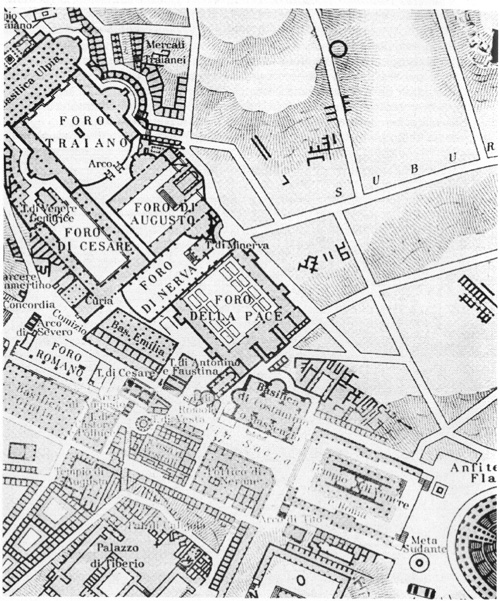
1 - Side-placing between Elements
When an Element approaches the other Elements, establishes an interdependence, a link and therefore a relation under the form of a linguistic principle.
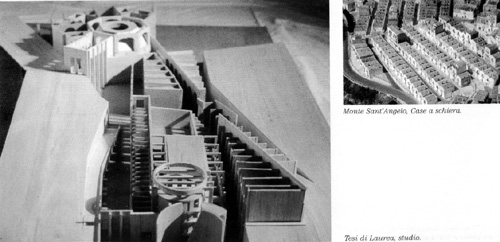
2 - Interpenetration between Elements
Already-known linguistic elements, characterised by a powerful permanence through the course of history, are “conventional” materials; their “re-use” guarantees the historical continuity of the new project. At the same time the innovation is garanteed by a “non conventionality” of the reutilization of the yet-known material.
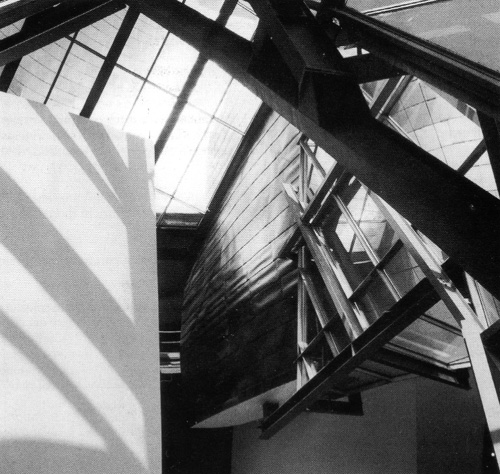
All those endless combinatorial forms which are derived from the through-penetration of the Elements, are mentally thought to be “mobile” on not-parallel sliding axis (in this way virtually disposed to intersect themselves); This combinatorial forms reproduce an organizing form with extraordinary formal results. In this new resultant unit, each Element conserves its identity and simultaneously contributes to build a superior unit: the Phrase.
Moreover, all the archetypes, since they are interior to the historical process, are subjects to transformation, which has to be considered like an unceasing form of reuse.
So the time becomes a valid and useful principle in the project; project can foresee different temporal phases each expressed by a distinct project morphology and therefore by a clear identified form. In such a way, the time necessary for the construction of the city is “captured” by the architecture project which acquires it in the synchronic dimension of a “new project”.
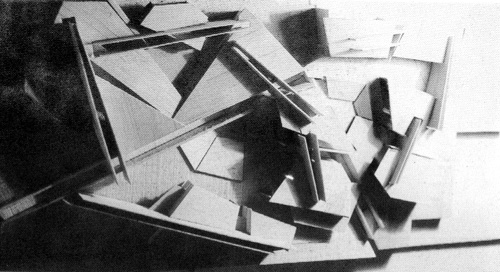
3 - Shifting, rotation, withdrawal
The organization of the Elements puts off stability and strong structural requirements through ordinary axis. When the Elements are intersected and through-penetrated between them, some of these give up their own elements in favor of the others who form “stronger” structures, giving life to a process of controlled shattering of elements: the Withdrawal.
On the contrary, it exist an almost endless field in which the forms displace themselves without any geometrical affinity or through intentional refusal of any kind of basic geometry. This process is marked by a general instability that, without renouncing to the Form – and therefore without falling into causality – asserts non rational and purposely non logical values.
The Shifting and the Rotations mostly stand out – in the composition- the force of the archetypes’ form. “These are images that before belonging to the human history, they belong to preconscious … these are images which seem familiar to us even if we’ve never seen them before.”
The archetypes, invariant forms of our history and our mind, usually represent the reasons why of architecture, that is too often reduced to the formalistic problems of how-to.
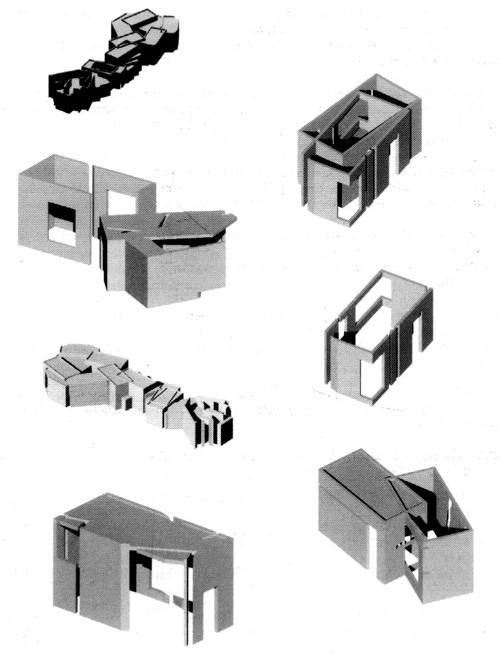
|